Why $760M Gymshark Keeps It Boring
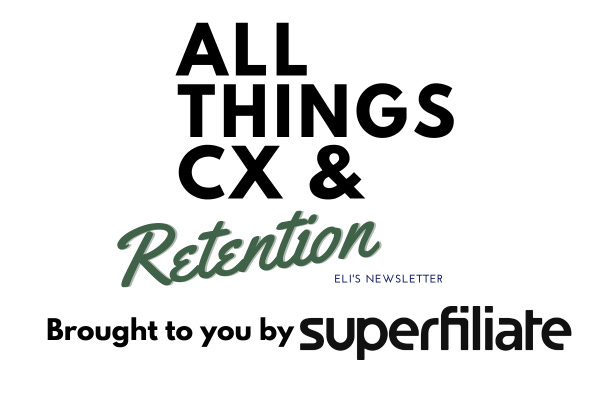
Hi Team!
What a damn year this week has been. Hope you're all feeling good and staying sane.
I was chatting with the folks at WeNatal the other day (phenomenal brand, by the way) and we were going back and forth on PDPs and slide carts. I started pulling up examples from a bunch of well-known DTC brands, and something hit me in the face.
Everything in ecom is shifting.
Today, I want to walk through what I'm seeing and where we go from here.

This newsie is brought to you by Superfiliate!
Make creator partnerships your ultimate growth lever by consolidating affiliate, ambassador, influencer, and creator programs to one platform—ready to scale.
You know that influencer who crushed the first month of their partnership, then... crickets? Or the affiliate sitting at 8 conversions when they need 10 to unlock the next tier of your program?
Influencer marketers are so focused on recruitment, they often neglect the follow-through that keeps creators engaged and converting long-term.
The problem? There just aren’t enough hours in the day to send DMs, onboarding emails, and post reminders to keep creators motivated to drive revenue.
That's why they built Superfiliate Automations —to put the most time-intensive parts of program management on autopilot and nurture partnerships that deliver consistent sales, rather than one-off posts.
Here's how Superfiliate Automations drives creator retention for your program:
Personalized onboarding emails & DMs that provide links & codes, program perks, FAQs, and best practices to set your creators up for success.
Follow-up reminders to redeem welcome gifts and start producing content.
Milestone triggers to encourage creators who are close to the next program tier with tips to cross the finish line.
Surprise rewards like $10 wallet bonuses and congratulatory messages when creators hit conversion milestones.
Anniversary flows that add creators to gifting programs after 1 year, then follow up with thank-you messages when they post.
Think of Automations as your creator relationship manager that handles those nurturing touchpoints that turn one-time partnerships into long-term revenue drivers.
Set your triggers and filters, choose your engagement actions, and watch partnerships deepen and sales compound.
Ready to turn creator retention into your revenue growth engine?

The Bell Curve of Complexity:
We started simple.
One product. One page. One clear CTA.
Then came the playbooks, the growth teams, the optimization layers. Free shipping bars, free gift unlocks, and add-ons, dynamic upsells, and slide carts that doubled as PDPs.
It worked. It might still work, but something is shifting.
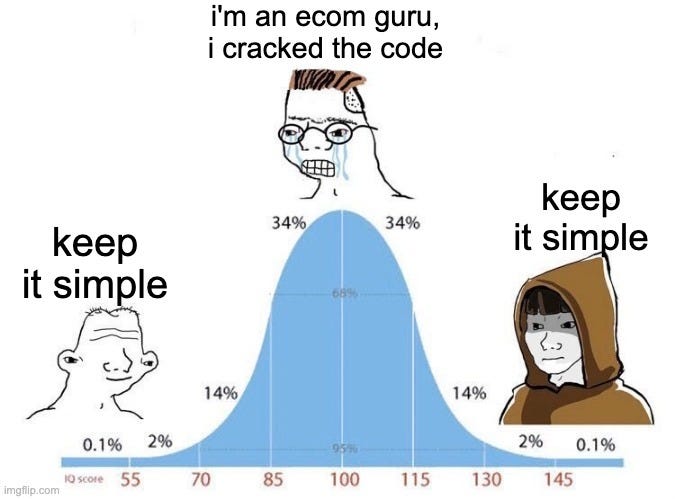
Gymshark did over £600 million in 2024. Their cart is almost boring. No popups. No bundles. No urgency banners. Just a clean page that stays out of the way. Take a peek at AG1 and seed as well.
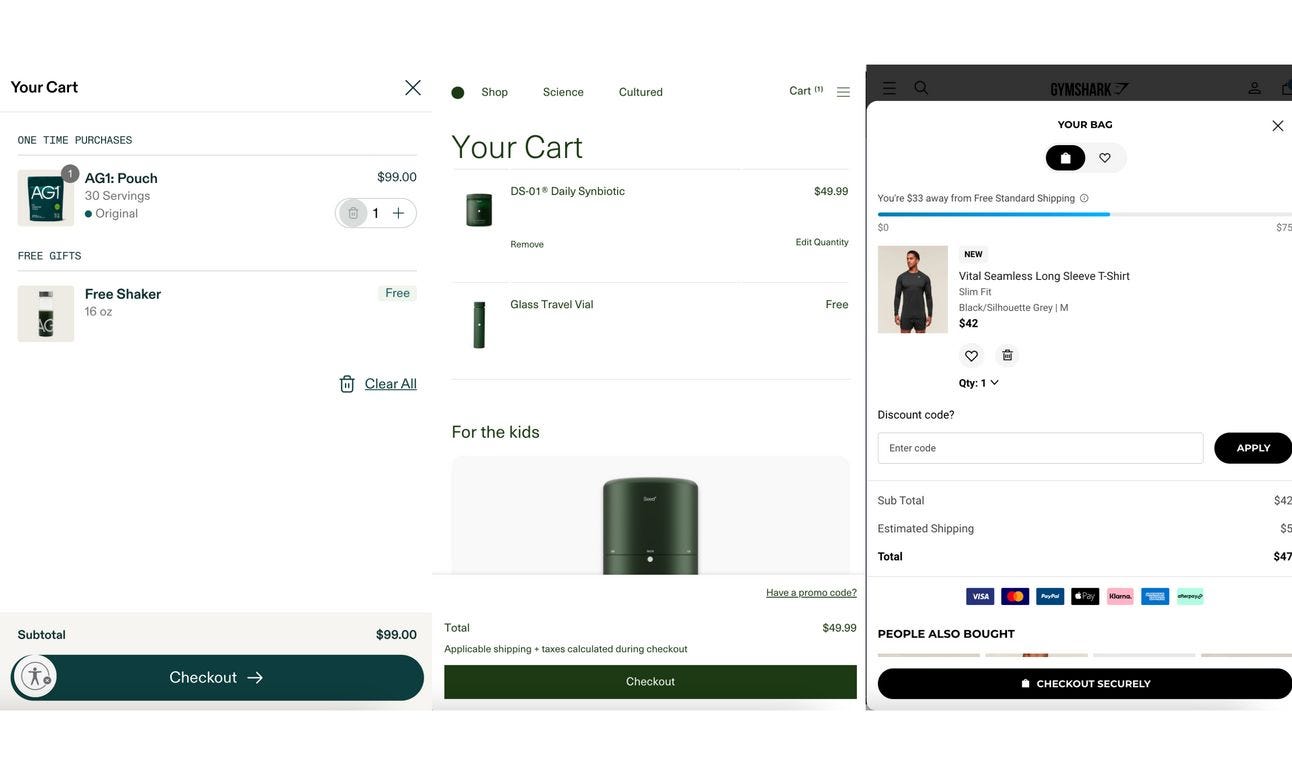
Now contrast that to, say, True Classic, Rare Beauty, or Magic Mind.
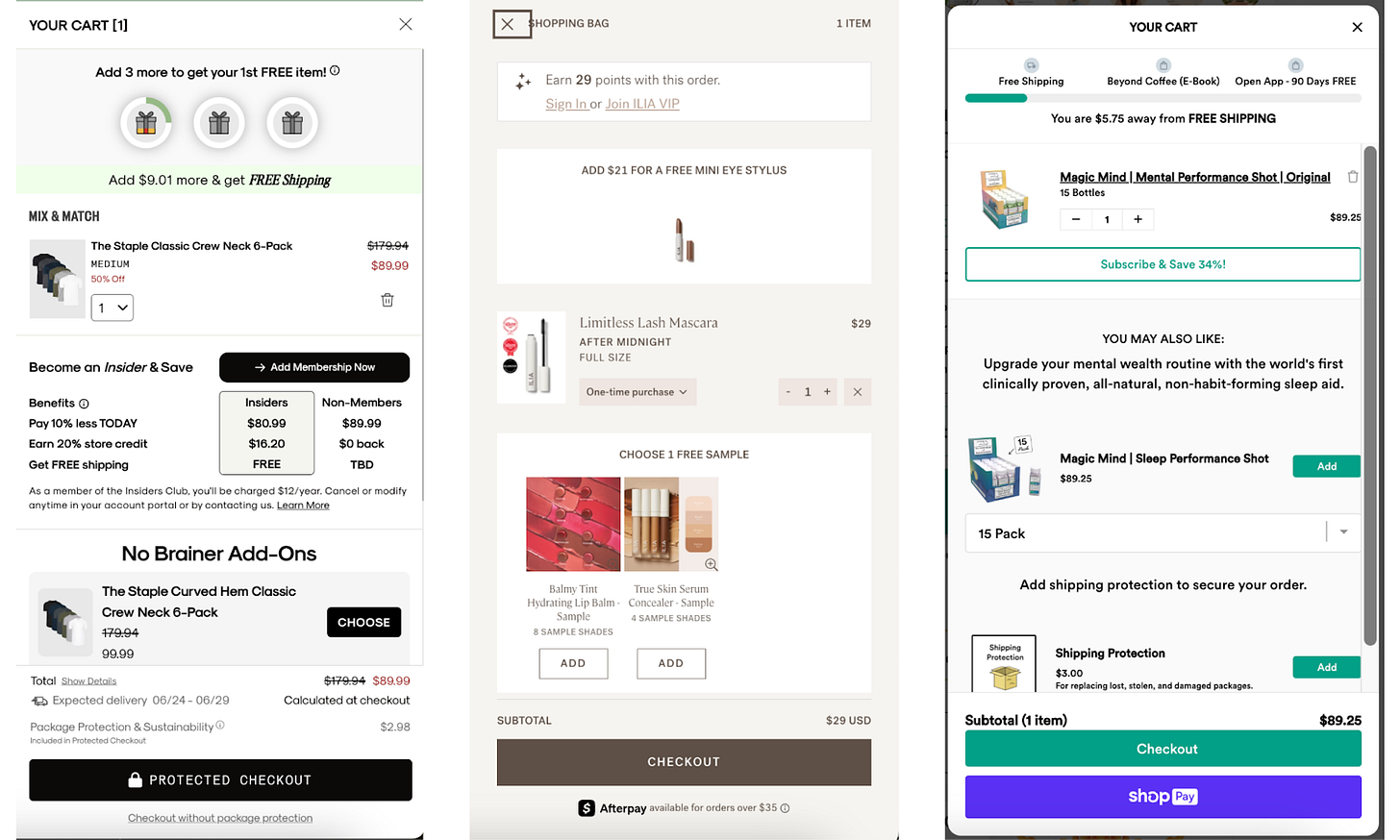
Some of these carts feel like a carnival booth. Spin the wheel. Get a gift. Add $7.92 more for shipping. Wait, join a loyalty club. Choose your free sample. Add one more for 30% off. You can practically hear the circus music in the background.
It’s not necessarily “bad.” These brands are scaling fast. They’re A/B testing their way to clarity. And sometimes, the chaos works, especially when the incentives are real and the merch is strong. I have no doubt some are crushing.
But it’s also a lot. And in the broader ecosystem, you can feel the fatigue setting in. People are tuning it out. Brands are looking for ways to simplify again. Back to basics. Back to clean, fast, don’t-make-me-think UX.
That’s what made this tweet from Cody Plofker stick with me this week.
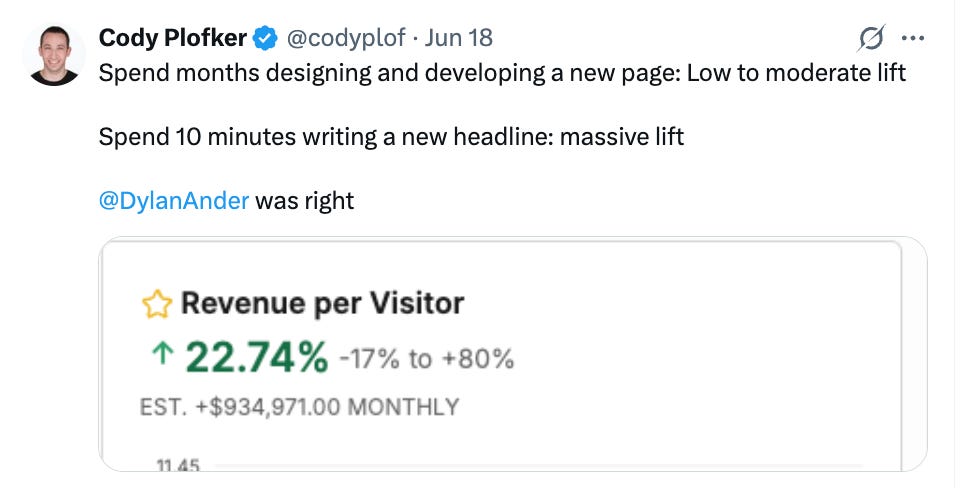
His team spent months reworking a page, and saw decent results. Then spent 10 minutes rewriting a headline and saw a 22% lift in revenue per visitor. Wild. But also, not that wild if you’ve been in this game long enough.
It’s easy to get obsessed with adding complexity. New flows. More nudges. More elements. But sometimes, real lift comes from stepping back and doing less, or at least focusing on what really moves the needle.
This bell curve is real. Start simple. Layer on complexity. Then slowly, painfully, roll it back to something clean again. The difference now is that more teams are skipping the middle part entirely. Starting clean. Staying clean.
Customers are tired:
Tired of turning into Carmen Sandiego to find the X button on the fullscreen popup you added because some dude on Twitter said it’s the only way to convert.
Tired of entering all their medical records just to get a discount code, only to be asked for their phone number at the end.
Tired of jumping through ten hoops just to check out.
People want simple. They want great products. They want to buy without being dragged through a marketing funnel that feels like a bad escape room.
But simplicity is unintuitively complex. Especially when you’ve spent years adding things. When your team is used to shipping more, layering more, and doing more.
There’s a quote I love: “Perfection isn’t when there’s nothing left to add. It’s when there’s nothing left to take away.”
That’s the energy right now. Brands are cutting back, stripping away the noise, and learning how to do more with less.
That’s why Cody’s tweet stuck. After all the work redoing the entire page, it was a simple headline tweak that drove the biggest lift.
This curve is real. Start simple. Add complexity. Then slowly strip it away to find what matters again. Except now, some folks are skipping the messy middle altogether. They’re starting clean and staying clean.
Where to Keep Testing vs. Where to Keep It Simple
Not everything needs to be optimized to death. But not everything should be stripped down either. Some things are worth testing. Others just need to get out of the way.
Here's what I'm seeing across the board.
Worth Testing:
Offer structure and framing
10% off vs. $10 off. Buy one, get one vs. bundle-and-save. Free gift vs. store credit. These tiny shifts often drive real conversion lifts.Subscription offers
Not just whether to offer it, but how. Is the discount deep enough? Is there clear skip and cancel language? Does it feel like a trap or a no-brainer?Upsells and cross-sells
What shows up post-purchase? What’s suggested in-cart? Whether it’s a light nudge or a pushy wall of product. These moments are high-intent and high-impact.Landing pages for paid traffic
Especially for new customers. These are isolated playgrounds where you can tweak, test, and measure without messing with the broader site experience.Content hierarchy on PDPs
Lead with ingredients or with use case? Put reviews up top or tuck them below? These decisions shape how people understand the product at a glance.
Better Kept Simple:
Popups
Ask for less. One or two inputs max per screen. Keep the value exchange clear. Nobody wants to fill out a FAFSA to get a discount code.Checkout flow
Don’t overthink it. Let them pay, choose shipping, and get out. Most fields are optional, but every field costs you conversions.Navigation
Too many menus, filters, and pathways just confuse people. Steer them to the right product with clarity, not clutter.Slide carts
This one’s tricky. Some brands are turning them into full-blown PDPs. That works in some cases. But for most, simpler is better. Show what’s in the cart, surface a nudge or two, and move along.Referral and loyalty modals
Keep these lightweight and skippable. They should feel like a perk, not a weird roadblock. Keep it simple, I beg of you.
The best teams are learning where to simplify and where to test. Not because it's trendy. Because they're sick of bloated roadmaps and fragile funnels. The biggest unlock is often about focus. Knowing what matters, and what just doesn’t.

That’s it for this week!
Any topics you'd like to see me cover in the future?
Just shoot me a DM or an email!
Cheers,
Eli 💛
P.S. If you want to figure out how to get your brand to rank high in LLMs and show up in ChatGPT, Gemini, and more… check this out.



